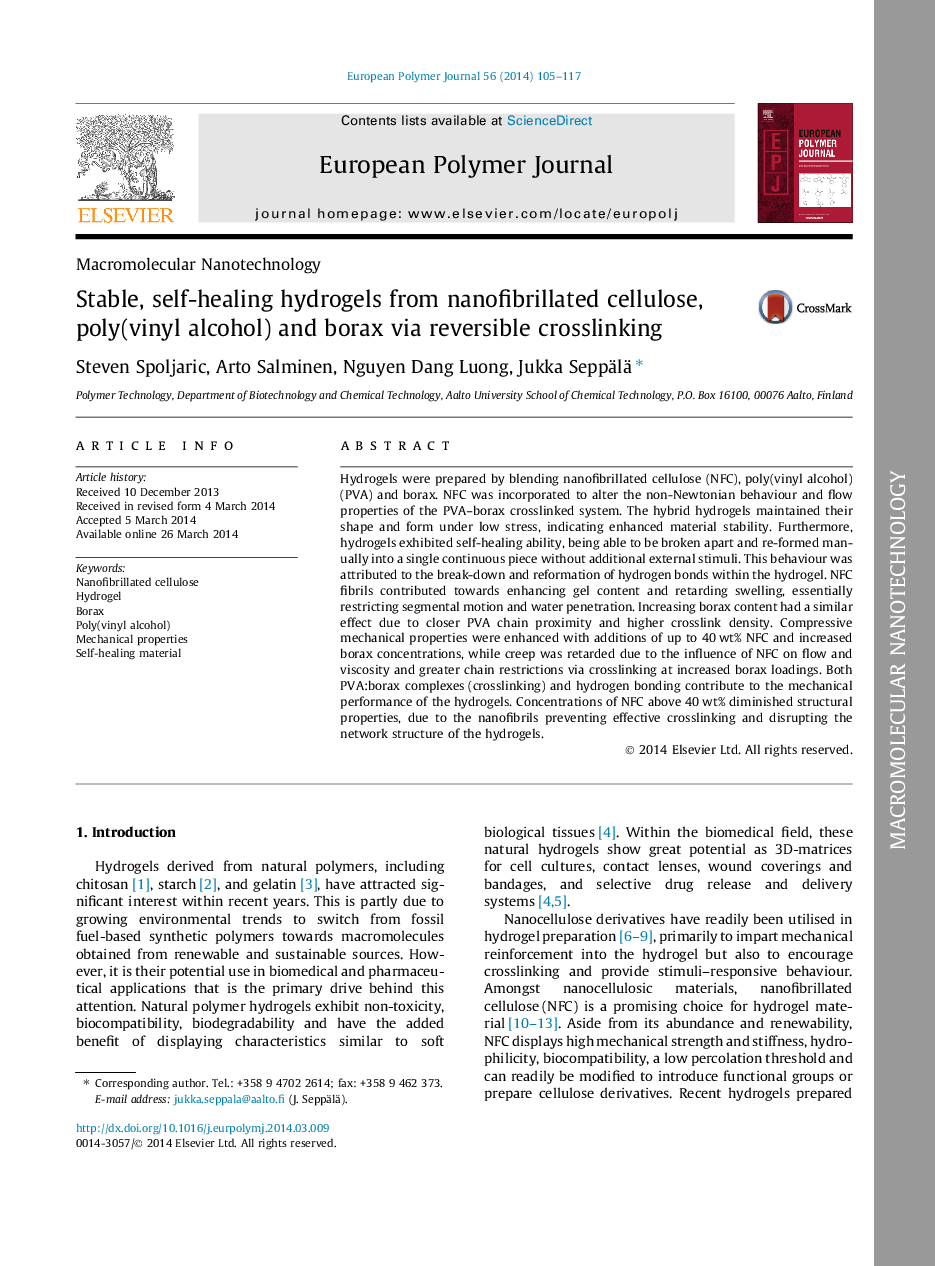| کد مقاله | کد نشریه | سال انتشار | مقاله انگلیسی | نسخه تمام متن |
|---|---|---|---|---|
| 1399431 | 1501379 | 2014 | 13 صفحه PDF | دانلود رایگان |
• Nanofibrillated cellulose–poly(vinyl alcohol)–borax hydrogels prepared via physical blending.
• Hydrogels were mouldable and maintained their shape following moulding.
• Self-healing ability was exhibited by the hydrogels.
• Nanofibrillated cellulose modified hydrogel rheological properties, while also influencing the mechanical behaviour.
Hydrogels were prepared by blending nanofibrillated cellulose (NFC), poly(vinyl alcohol) (PVA) and borax. NFC was incorporated to alter the non-Newtonian behaviour and flow properties of the PVA–borax crosslinked system. The hybrid hydrogels maintained their shape and form under low stress, indicating enhanced material stability. Furthermore, hydrogels exhibited self-healing ability, being able to be broken apart and re-formed manually into a single continuous piece without additional external stimuli. This behaviour was attributed to the break-down and reformation of hydrogen bonds within the hydrogel. NFC fibrils contributed towards enhancing gel content and retarding swelling, essentially restricting segmental motion and water penetration. Increasing borax content had a similar effect due to closer PVA chain proximity and higher crosslink density. Compressive mechanical properties were enhanced with additions of up to 40 wt% NFC and increased borax concentrations, while creep was retarded due to the influence of NFC on flow and viscosity and greater chain restrictions via crosslinking at increased borax loadings. Both PVA:borax complexes (crosslinking) and hydrogen bonding contribute to the mechanical performance of the hydrogels. Concentrations of NFC above 40 wt% diminished structural properties, due to the nanofibrils preventing effective crosslinking and disrupting the network structure of the hydrogels.
Figure optionsDownload as PowerPoint slide
Journal: European Polymer Journal - Volume 56, July 2014, Pages 105–117
